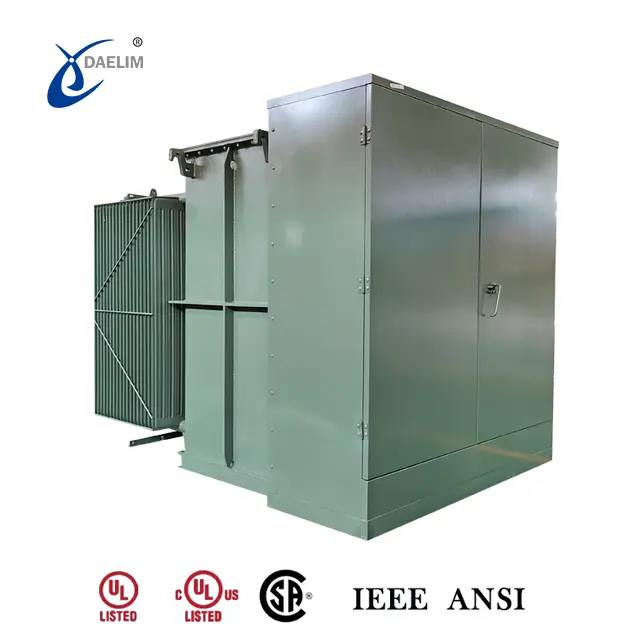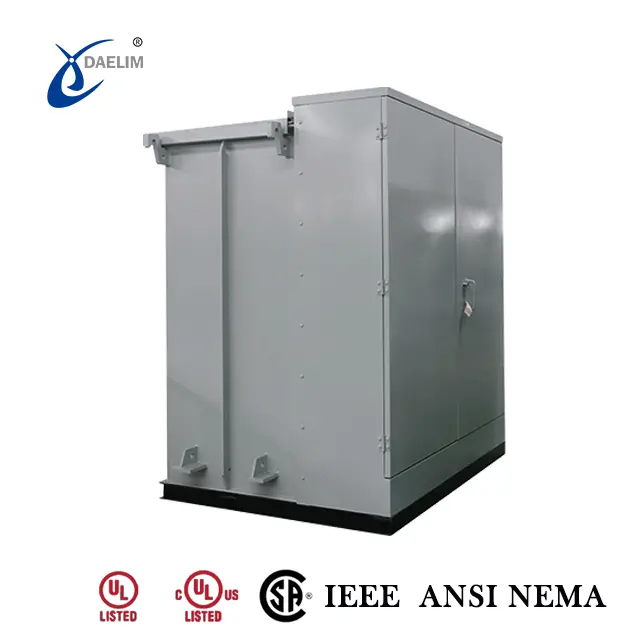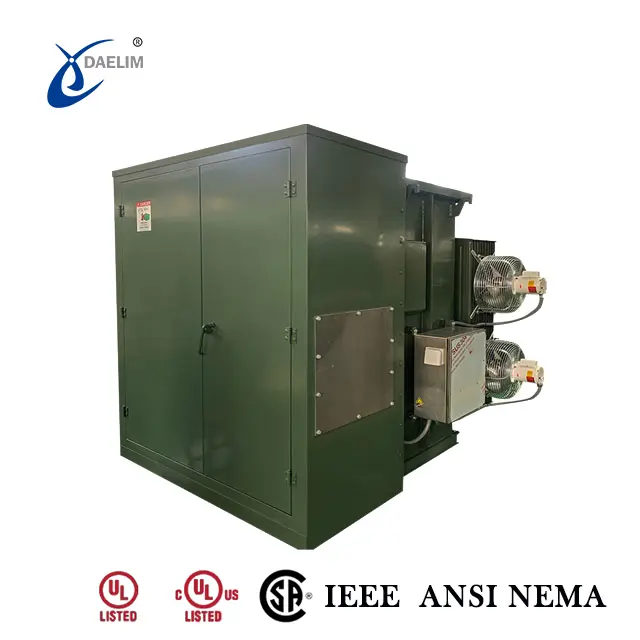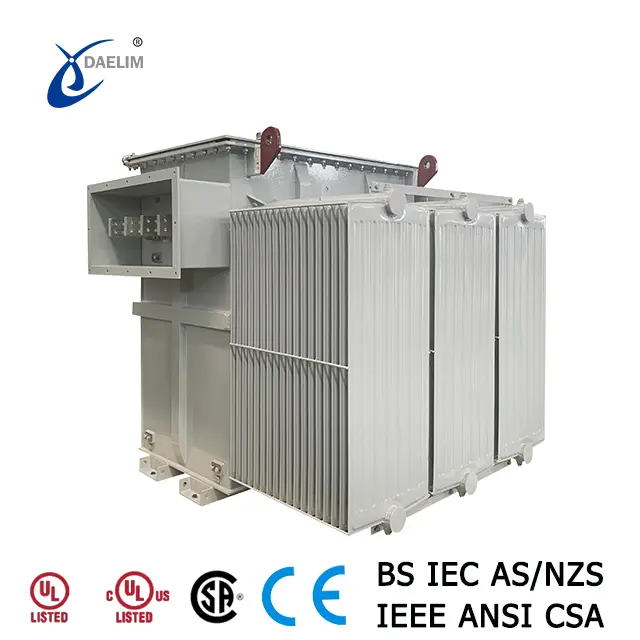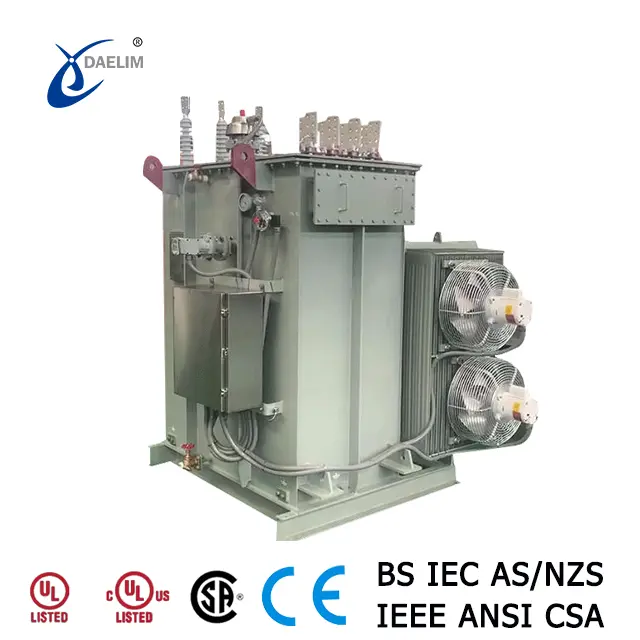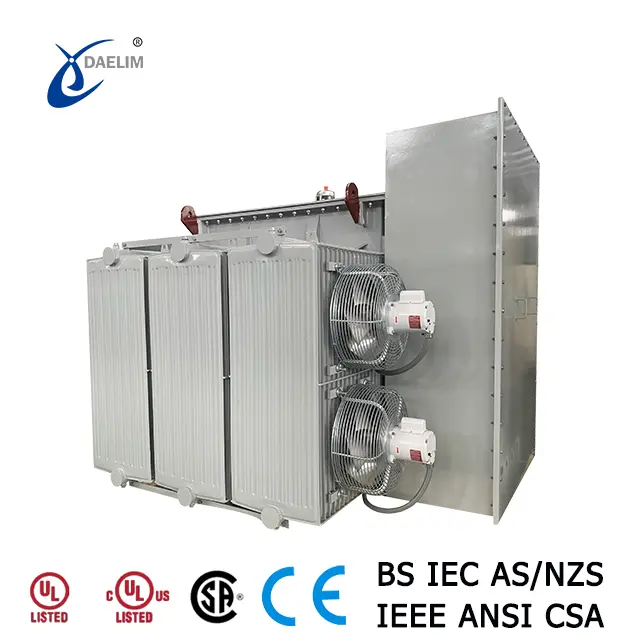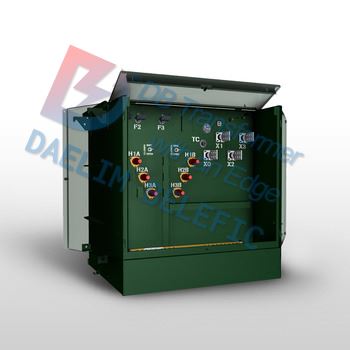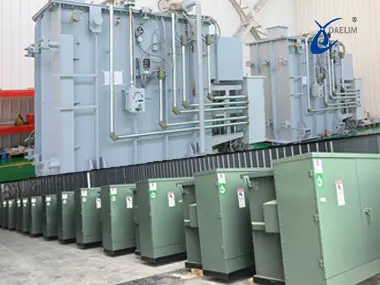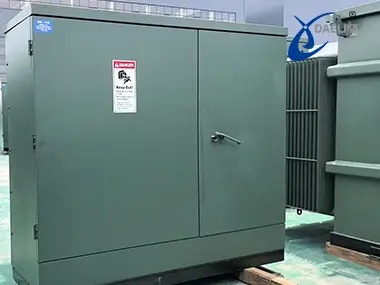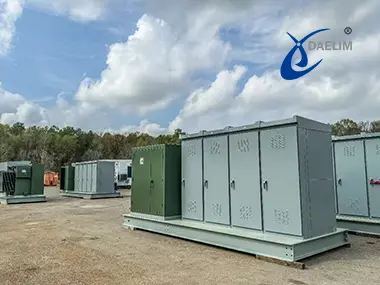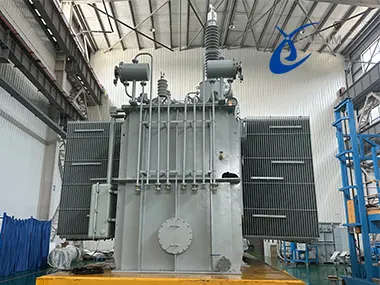Zig Zag Grounding Transformer

Like every electrical connection the transformer grounding is one of the most fundamental aspects of the transformer installation. The electric transformer grounding ensures that the transformer is safe and reliable in its operation and the entire power distribution network is safe to use.
Proper grounding electricity distribution systems or electrical devices may experience unstable voltage conditions that can lead to system or equipment failure.
In faulty conditions the transformer grounding provides an alternate pair for the safe disposal of faulty current protecting the electrical equipment and these Electricity Distribution systems. There are various grounding methods that exist including solid grounding resistors grounding but the zig zag grounding transformer is one of the most efficient and reliable transformers for various applications.
Contact Daelim TransformerWhat is a Zig Zag Grounding Transformer?
Zig Zag grounding transformer is a special type of Electrical Transformer. It is designed and developed to provide a stable transformer neutral point for applications involving ungrounded or floating electrical systems. The zig zag grounding Transformers are designed with interconnecting winding.
This winding method has a unique configuration to the grounding transformer allowing it to function effectively as a grounding device. Unique here is that this grounding of an Electrical Transformer is without acquiring a secondary winding that is normally required in any standard Electrical Transformer.
This is the most obvious point that differentiate the zig zag grounding Transformer from any other standard type of grounded transformer.
Learn more about: Grounding Transformer
Function and Working Principle of Zig Zag Grounding Transformer
The basic working principle of a zig zag grounding transformer is not different from a standard type of Electrical Transformer. It is the structure and winding configuration and how it works to provide grounding is what is different from a conventional or standard electrical transformer.
Internal Structure and Zig Zag Transformer Connection Diagram
The internal structure of the zig zag grounding transformer is what separates it from the other standard Electrical Transformer because these zig zag grounding transformers have a three phase winding arrangement in a z pattern. If you look closely at the zig zag grounding Transformer winding you will observe that each winding is divided into two equal parts.
These are not only divided into two equal parts, the winding is also wound in the opposite direction and they are interconnected in a way that creates a neutral point. This configuration of Transformer winding allows the zig zag grounding Transformer to provide a very low resistance to the faulty current while it helps maintain the overall system's stability.
How the Winding Configuration Creates a Neutral Point
In a Zig Zag grounding Transformer the configuration of the warning is such that it is interconnecting resulting in the cancellation of the normal phase voltage. This allows the zero ground fault current to flow through the neutral. This enables the system to maintain a stable reference point, preventing overvoltages in ungrounded networks.
How Zig Zag Grounding Differs from Other Grounding Methods
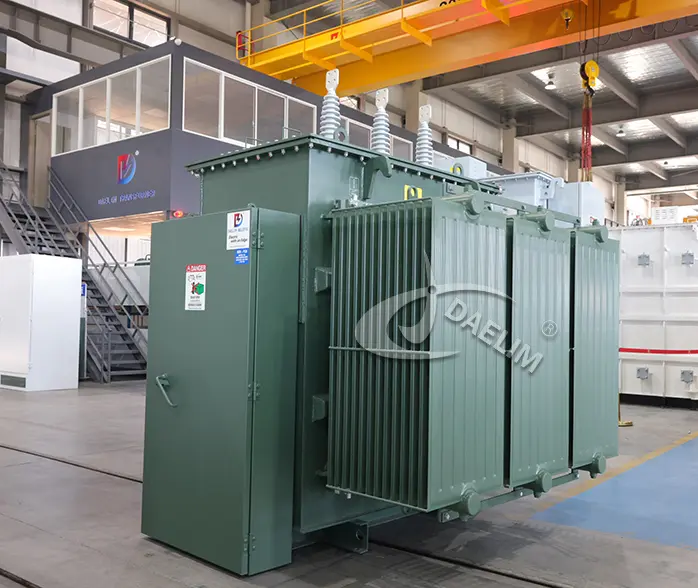 There are three different common grounding methods that are applied in electrical Transformers and we will compare them with the Zig Zag grounding Transformer in order to show how they is a grounding transformer is different from other grounding methods and how the zig zag grounding transformer is a battery voice than other grounding Transformers.
There are three different common grounding methods that are applied in electrical Transformers and we will compare them with the Zig Zag grounding Transformer in order to show how they is a grounding transformer is different from other grounding methods and how the zig zag grounding transformer is a battery voice than other grounding Transformers.
Comparison with Solid Grounding
The solid grounding of the Electrical Transformer is considered to be the fastest grounding method that clears the fault faster than any other grounding method. In this grounding method the neutral of the Electrical Transformer is directly connected to the ground without any resistance to the electricity flow.
Due to its direct connection the solid grounding sometimes allows the high falled current when there is a ground fault in the electrical system of the Electrical Transformer. This excessive current can damage sensitive equipment connected to the Electrical Transformer and this is where the Transformer before from the solid grounding.
The zigzag does not allow any excess for Run to flow towards the electrical components of reducing the stress on the electrical component. It provides a very controlled grounding method that ensures that the grounding is stable without any risk of damaging the attached parts or sensitive equipment. This transformer limits the faulty current in case of 40 ground by providing a balance return back for the faulty current.
You may enjoy: Transformer Design & System Grounding
Comparison with Resistance Grounding
Overcome the problem of solid grounding the resistance grounding was introduced and in resistance grounding there is a special device called neutral grounding resistor that is placed between the Transformer neutral and the ground.
This special device limits the fault current flow and only allows a safe value of the faulty current to flow that in return protects the sensitive equipment and the parts of the Electrical Transformer. However this special device has a problem of its own as it continuously dissipates power when Fault occurs this leads to continuous energy wastage and thus reducing the overall efficiency of the Electrical Transformer.
The zig zag grounding transformer provides a very low resistance path to the faulty Current and does not despair continuous power when there is a fault in the electricity distribution system. This makes the zigzag grounding Transformer much more energy efficient as compared to the solid grounding and resistance grounding and they also achieve the grounding without need of any additional device that further reduces the cost of transformer manufacturing installation.
Comparison with Conventional Grounding Transformers
Grounding method for Electrical Transformer but most of the Electrical Transformer of today does not have this conventional grounding method. The conventional grounding method consists of two different windings, one is the wye connected primary winding and then there is a delta connected secondary winding.
Although the method provides a neutral ground, the addition of another secondary winding increases the Transformers size and also increases the overall cost of the transformer. This is where the Zig Zag Grounding Transformer goes step ahead of the conventional grounding Transformer as this zigzag Transformer does not need any additional secondary warning so it is always much more compact and cost effective as compared to the conventional grounding transformer.
Other than these disease grounding transformers have a much better balanced zero sequence current that improves the overall performance and reliability and efficiency of the transformer when compared with the conventional grounding transfer.
Factors Affecting Zig Zag Grounding Transformer Sizing
All those factor that are involved in sizing of a standard Transformer or also part of Zig Zag grounding Transformer sizing but due to its dedicated working and dedicated applications this zigzag Transformer also have some additional factors that you need to keep in mind before selecting a proper zig zag grounding Transformer for your application.
System configuration
Zigzag grounding Transformer sizing depends a lot on the system configuration that includes the voltage level, the current level and the network topology. Depending on these factors you need to select a transformer whose Power capacity and voltage level can satisfy the network requirements and also select the Transformer whose insulation material and voltage ratings are enough to satisfy the Electricity Distribution or consumption needs.
Ground fault current expectations
The main factor of prioritizing a grounding transformer above The Other type of grounding transformer is to have better ground fault protection and protection of your sensitive equipment in case of ground fault. So to have the most efficient zig zag grounding Transformer for your dedicated application it is important for you to have a proper Estimation and do proper ground for current expectations. If the selected Transformer rating is lower than the ground fault current then this is the ground in the transformer will not be able to protect your sensitive equipment.
Physical constraints
Physical constraints like available space and the installation site also play a significant role in selecting the proper zig zag grounding transformer.
Reading more about: Transformer Sizes and Ratings
Advantages of Zig Zag Grounding Transformers
- The zigzag chronic Transformer offers the best all protection by effectively providing it controlled patch to the fault current during ground fault and reduces potential damage to the sensitive electrical and electronic equipments
- The zigzag grounding Transformer also stabilities the power distribution system by balancing the unbalanced voltage condition that occur during the ground fault
- Zigzag grounding Transformer does not need any separate total grounding register that reduces the cause associated with dedicated recruitment needed for grounding standard transformer.
- As the Zig Zag grounding Transformer does not need any specific secondary warning for grounding purposes, this reduces the overall size of the Electricals Transformers making it much more space action as compared to the other standard transformer.
- The unique winding configuration of the zig zag grounding transformer offers a unique and very stable neutral point that allows zero fault current flow towards the sensitive equipment. This reduces a lot of stress that might be produced on sensitive electrical parts of the transformer.
- The zig zag grounding Transformer offers much more resistance to the high fault current thus increasing the faulty current handling capabilities of the Electrical Transformer.
- The zig zag grounding transformer is a truly you need Transformer that offers stable neutral for an ungrounded system that is crucial for stable operation of a floating electrical system.
Disadvantages of Zig Zag Grounding Transformers
- Although the Zig Zag grounding Transformer is developed to stabilize the electricity distribution system especially in case of ground fault, the grounding Transformer cannot work for prolonged overloading conditions. This means that the zigzag grounding Transformers have a limited overloading capacity and they cannot be used in applications where there are prolonged grounding faults.
- This zig zag grounding Transformer design is complex and making that Complex winding needs a lot of dedicated to link and dedicated machines. Other than this the design calculations associated with this zig zag grounding Transformer winding are also very complex and only high skilled labour can work on the manufacturing and assembly of this Transformer winding.
- Due to the complexity of the winding manufacturing assembly, the dedicated tooling and the dedicated machines involved and the requirement of holy skilled labour increases initial cost of manufacturing of the zigzag surrounding transformer. However, the high front cost of the Zig Zag winding Transformer can be justified with the high performance, high efficiency and long term benefits in the power system stability.
Applications of Zig Zag Grounding Transformers
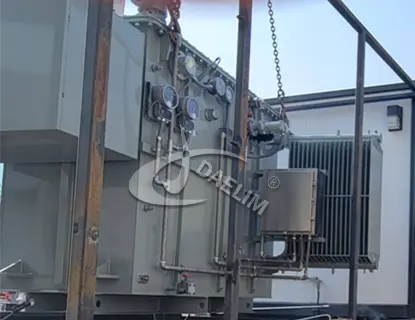 Zigzag grounding transformers are considered a dedicated type of electrical Transformers but still they have a wide industrial application and they are known for their reliability and high efficiency.
Zigzag grounding transformers are considered a dedicated type of electrical Transformers but still they have a wide industrial application and they are known for their reliability and high efficiency.
Industrial Power Distribution Systems
Industrial applications like manufacturing industry, metal machining industry or any other associated Industry that has sensitive electrical machines, needs a dedicated Electrical Transformer for its power distribution system.
This is where the Zig rounding Transformer can help stabilize the power distribution system in industrial applications. As the Zig Zag grounding transformers are designed and developed for Sasti machines in the case of ground fault, any such industry with sensitive equipment should have a grounding transformer for his power distribution.
Renewable Energy Systems (Wind and Solar Farms)
The recent developments in the renewable energy sector include more and more industries and residential setups or adopting wind and Solar form to meet their electricity needs. One big disadvantage with this wind and Solar Electricity production forms is that their Electricity production system fluctuates too much when it comes to producing and delivering the electricity. Overcoming this unbalanced voltage and transient faults the Zig Zag grounding Transformer offers a reliable and stable solution as these Transformers can very easily and efficiently balance the unbalanced voltage and can save the sensitive machinery and the sensitive when and Solar form equipment from any type of ground Falls.
Electrical Substations and Data Centers
Electrical substations that receive electricity from the main Electricity production system and then forward is to the local distribution systems for the data centres that consume a lot of electricity for their data processing and data saving work, the zig zag grounding Transformer or the best Transformers as the Transformer will work to protect the sensitive machinery of the electrical substitution for the computers of the data centres from any type of ground Faults.
Conclusion
The zig zag grounding Transformer is a truly unique solution for applications that need a dedicated system to prevent sensitive equipment from ground fault current. Please Transformer or an effective solution for providing neutral grounding in floating electrical systems or ungrounded applications. Their unique winding configuration ensures efficient fault current mitigation, voltage balancing and enhanced power system stability. The zig zag grounding Transformer offers the advantages like they needless pace for installation, they are more cost effective solution for a longer Run, they offer better efficiency and more reliability then standard Transformers and they are proven to be much better for prevention than a standard Electrical Transformer. This is because these transformers are used in all types of sensitive applications including renewable energy data centres and other industries where sensitive equipment is used.
Follow Up
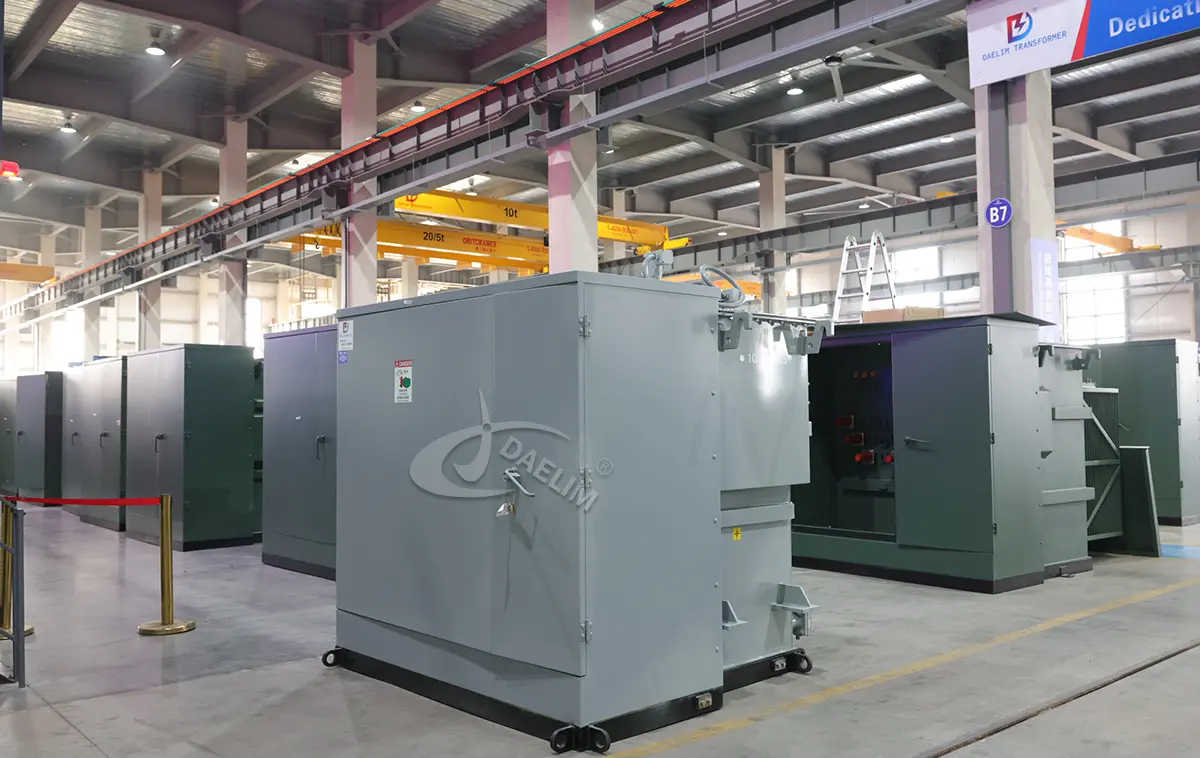
Zig zag grounding transformers are very important for our modern and future industrial applications and it is due to this religion the industry is widely accepting and now using these highly efficient electrical Transformers. We at Daelim Transformer offer zig zag grounding Transformers of all types sizes and Power capacity, the zigzag rounding transformers are designed and developed following the international standards of ANSI, ASTM, ISO, IEEE and others.
If you have any questions related to Zig zag grounding Transformers then you can contact us and our team of experts will talk you through the process.
Related Products
Related Article
Comparing Amorphous Core and Silicon Steel Core Transformers
Amorphous and silicon steel cores are key transformer materials. Amorphous cores offer lower core losses, higher efficiency, and are ideal for energy-efficient, eco-friendly applications, but are costly and fragile. Silicon steel cores are cheaper, durable, and suitable for high-power, mass applications, though with higher losses. Choice depends on efficiency needs versus cost considerations.
Basic Guide for Grounding Transformer
In the three-phase power system, grounding transformer plays the role and function of auxiliary transformer. The function of a grounding transformer is to provide grounding mode for ungrounded delta connect or wye connect. Therefore, a ground transformer is also a very important part of the power grid grounding system.
Guide to Common Industrial Transformer Voltages
Selecting the right industrial transformer voltage is crucial for equipment efficiency, safety, and energy loss reduction. Voltage must match machinery needs, regulatory standards, and allow for future expansion. Transformers are categorized into low, medium, and high voltage types based on application requirements in manufacturing, services, data centers, and power distribution systems.
Transformer PCBs: Understanding Their Role, Risks, and Modern Alternatives
This article explores transformer PCBs (Polychlorinated Biphenyls), once widely used for their superior chemical properties. It explains their benefits, toxicity, and the environmental concerns that led to strict regulations and a shift toward safer, sustainable alternatives in the transformer industry. Readers will understand why PCB transformer oil is now largely phased out.
Transformer Design & System Grounding (Wye vs Grounded Wye)
This article explains the importance of selecting the right transformer design and grounding method—focusing on grounded wye vs. ungrounded wye configurations. It highlights how proper grounding ensures safety, reliability, and efficiency in power distribution systems, providing an overview and comparison for engineers and technicians working with electrical transformers.
Voltage Regulation of Transformer
This article explains transformer voltage regulation, which ensures stable electricity delivery by minimizing voltage fluctuations. Proper regulation improves power quality, reduces energy losses, protects sensitive devices, and enhances the reliability and efficiency of the electricity distribution and consumption system.

